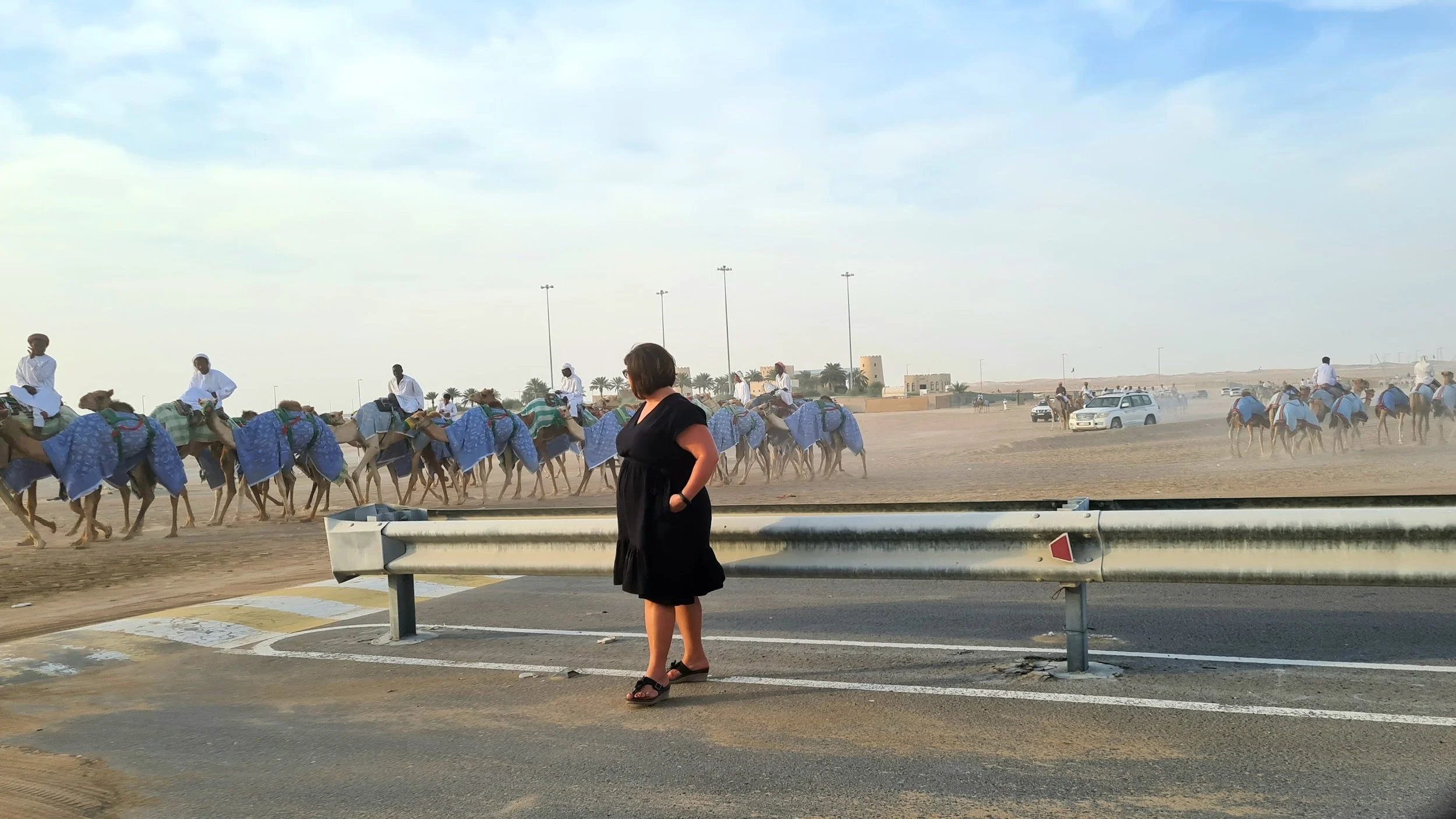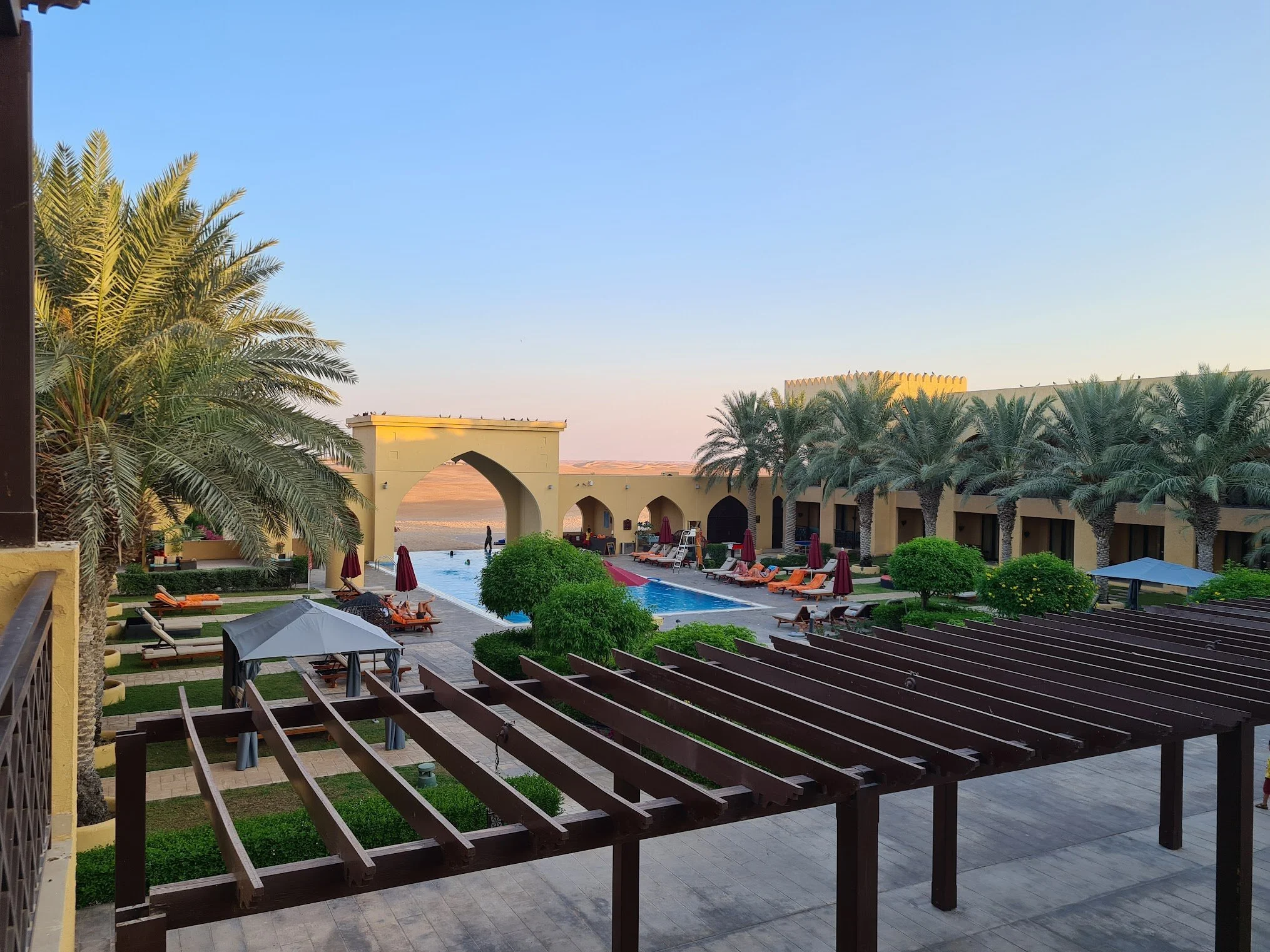February in Abu Dhabi means temps in the 80s, but February in the land of fire means winds strong enough to knock you off balance and evening lows below freezing. Walking across an open area, like a plaza or square, elicited several “okay, we can do this” intra-group pep talks as we traversed old town. This is my second recent trip into “real winter.” The trip to the Hague was a good dress rehearsal because those Azeri gusts don't play.
This plaza features wonderful dining and is an absolute wind-tunnel after dark
The Skinny on Azerbaijan - With a population of four million people, Baku, the capital, is as beautiful as any city I've visited. Its legacy as a major stop on the Silk Road gives it a deeply historical feel, like Xi'an or Istanbul. Two vestiges of the Silk Road come together in Azerbaijan: the trade routes brought Islam further to the east and brought dumplings from China westward into Slavic and Turkic cuisine.
The country is 96% Muslim but due to the imposed atheism of the Soviet era, the government and broad culture are secular. All the mosques we saw in the city were built in the classical style, but we learned they were of recent vintage, mostly built after the collapse of the USSR. Like we saw in Georgia, the architecture fell into three main buckets: ancient AF (classical), Soviet AF (brutalist), or futuristic AF.
Azerbaijan was on the business end of several historical conquests, having previously been a part of the Persian Empire, Russian Empire, and Soviet Union. The people are Turkic, like the people of Central Asia, Turkey, and the Uighers in China’s Xinjiang Province. But I noted they don't make the Turkic/Turkish distinction we make in English—our guides repeatedly called their countrymen "Turkish people." To that end, the Turkish flag is often displayed alongside the Azeri flag in the country. I've read elsewhere that Azerbaijan is culturally and politically Turkey's little brother. That largely checked out but leaves out the Soviet/Russian Empire thing.
Speaking of Russia, their relationship with Azerbaijan is complex. Azeris share a border with their colonizers. Students in primary school are taught the language and Russian is widely spoken by Azeris in the streets. Russian tourists fill the historical sites. But Azeris are apprehensive about their relationship with their northern neighbors. I heard the phrase “we have to keep Russia happy” no fewer than six times when discussing events in the Caucasus Region.
The Heydar Aliyev Center, the Presidential Museum, and center for explaining the Azeri side of their conflict with Armenia
Generally, I was struck talking to Azeris by their sense of pride in their country, their Islamic faith, and the ways in which the government provides for the people (from their oil & gas profits). Azerbaijan is a post-communist state but dodged the neoliberal shock doctrine and IMF structural adjustment bullet, that stripped many states of generous public benefits over the last thirty years. Put differently, the legacy of communism there is a fairly generous social welfare system, rather than a stripped down neoliberal shell of a state. They provide well for their people, especially for a country with a per capita GDP that ranks between Barbados and Albania:
Azeri workers get roughly a month of paid time off each year
Public university tuition is free for students who are academy qualified based on national exams
Tuition is also free (public or private) for people seeking employment in essential careers: doctors, pilots, etc.
They enjoy more or less zero out of pocket health care for basic and preventative care services
Typical rents run between $200 to $300/per month in the city
The government pays a subsidy to new parents, a one time baby bonus
They pay roughly $30 per month for utilities and the country subsidizes energy bills in the winter for all citizens
That’s quite a list.
Places that have less than the US seem to offer their citizens more but we somehow call them developing states.









